Faulty Foundation? The French Berthier
June 15th, 2021
9 minute read
The First World War saw a technological leap forward in terms of military hardware. The armies went into the war very much looking to fight a “short” and “glorious” little war that yet was expected to change the dynamics of Europe.
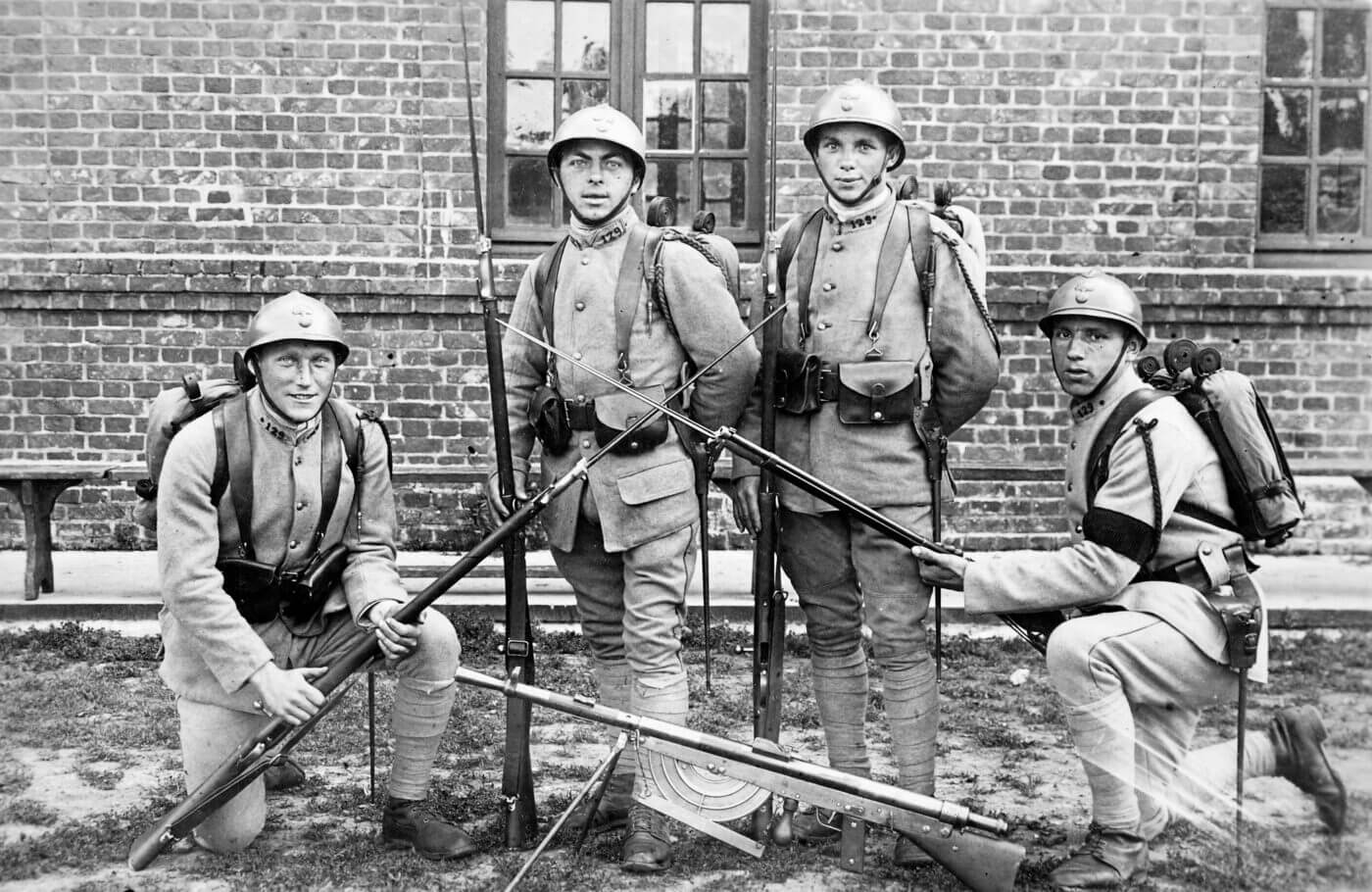
While the conflict is noted for the first conflict that saw the widespread use of airplanes and the introduction of tanks, and notably the first major conflict where machine guns were employed on both sides of the lines — it is often forgotten that World War I was also the first major war of the magazine-fed, bolt-action rifle.
It is also one area where France was woefully behind.
Faulty Foundation?
It was in the aftermath of the Franco-Prussian War, which brought down the French Second Empire, that the new French Third Republic began to modernize its army while also establishing a new colonial empire that stretched across Africa as well as Southeast Asia.

Almost ironically, the “Republic” sought to restore national pride by building a vast overseas empire, but in the process only created new headaches at home and for its military. One notable realization to come out of France’s defeat in 1871 was the need for an improved rifle.
It is true that the Chassepot rifle had several advantages over the Prussian/German Dreyse, but it had many shortcomings as well. The worst was that it fired paper cartridges that left burnt residues from both the paper and black powder, which causing fouling in the chamber and bolt mechanism.
The Chassepot was replaced by the Fusil Gras Modèle 1874, which was essentially a modified version of the former rifle designed to take metallic cartridges. More significantly the Gras had no magazine and thus could only fire one shot after reloading. While single shot weapons were common at the time – and contemporaries included the American Springfield Model 1873 “Trapdoor” and the British Martini-Henry – by the 1880s it was apparent to French military planners that a new rifle was needed.
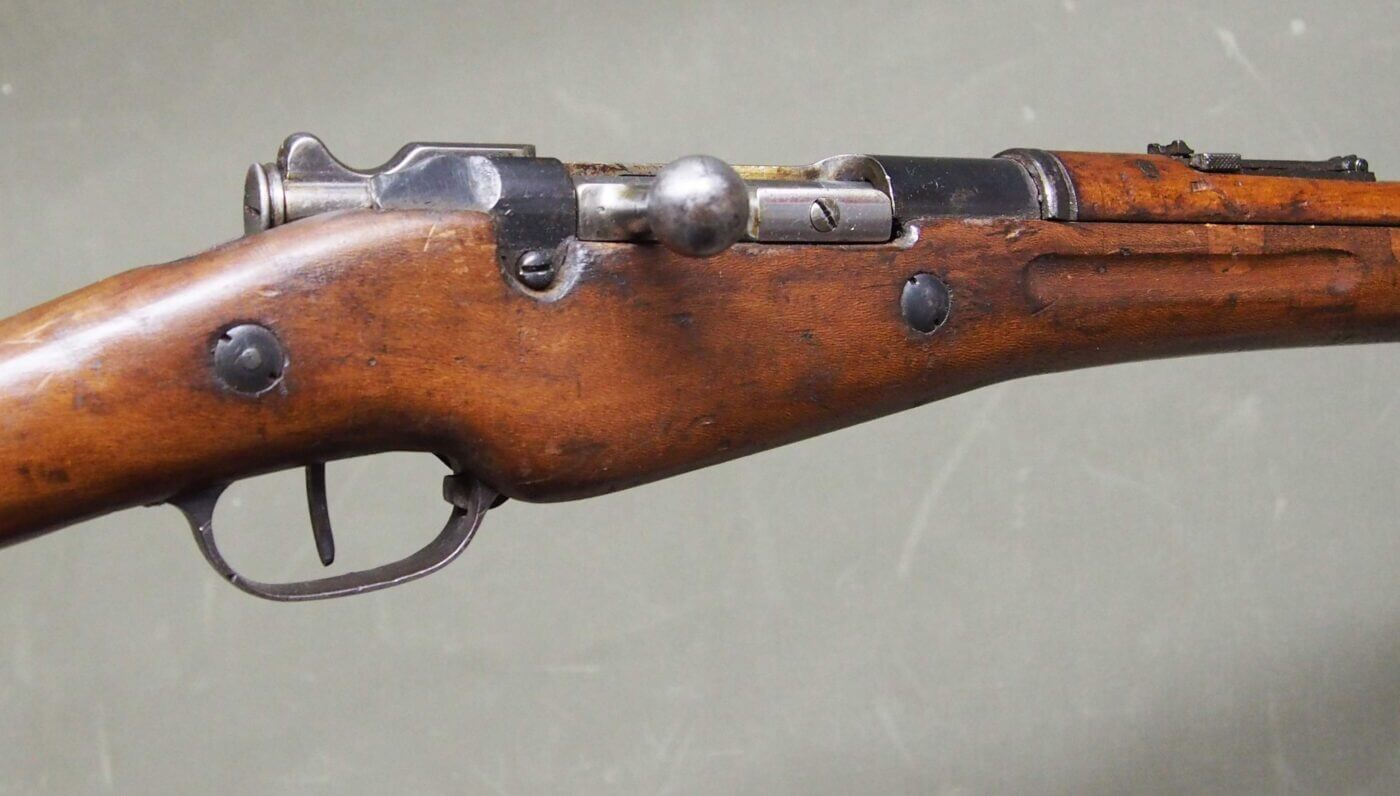
The French introduced not only a new rifle but a new cartridge with the Lebel Model 1886 rifle (Fusil Modèle 1886 dit “Fusil Lebel”). It was the first military firearm to utilize smokeless powder ammunition – which used Proudre B, a nitrocellulose-based propellant powder that was invented in 1884, and was as much as three times as powerful as black powder.
The Lebel was designed to be a rugged rifle with an oversized bolt and front locking lugs, but it also featured an antiquated forestock tube magazine and proved too heavy for use with cavalry as the magazine made it muzzle-heavy. Moreover, reloading while mounted was virtually impossible.
Enter the Berthier
The Lebel was simply not the right weapon, and soon after its introduction the French Army sought to develop another rifle; one that would be used alongside it and potentially replace it over time. The result was the Berthier, a weapon first produced as a carbine before being adapted as a rifle — the reverse of how typical weapon development occurs.
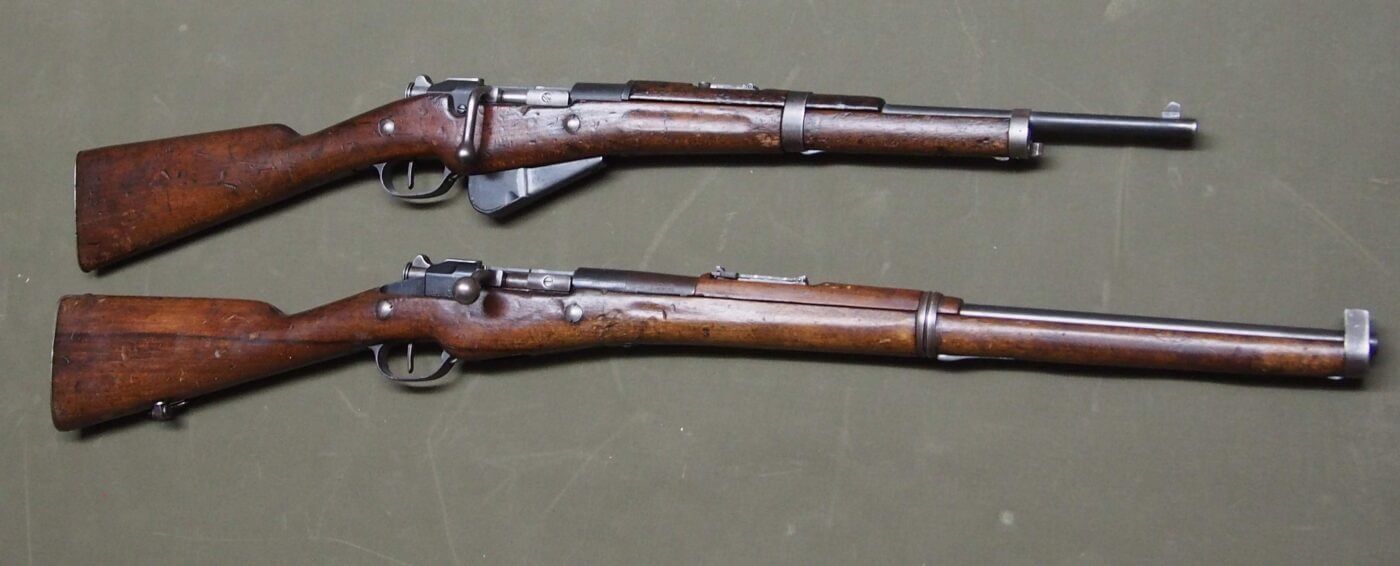
It is also important to note that the rifle was developed by Emile Berthier, an engineer for the Algerian Railway System, and not named for Louis-Alexandre Berthier, a Chief of Staff under Napoleon.
As a weapon design, the Berthier largely improved on existing weapon designs, most notably that it employed the Lebel action while it relied on a simplified and smoother version of the Lebel bolt system. This reduced the weight as well as the number of moving parts. It also featured a smoother operating system that made it quicker to load the next round. The bolt, which locked to the receiver with dual locking lugs, also featured a handle that bent down, unlike that of the Lebel.
In addition, instead of a tube magazine it featured a modified Mannlicher-type “en-block” clip loading system, with a symmetric clip that could be inserted into the rifle either way up. This also made it far easily to load than the Mannlicher system on which it was based. The downside was that it resulted in a more expensive clip.
The bigger issue with this symmetric magazine was that it significantly limited the capacity to just three rounds. Given the fact that the rifle could be loaded far quicker, and this was only a decade after the transition from single-shot rifles, the three rounds probably didn’t seem like a major detraction at the time. One of the factors that led to this design was that cavalry troopers actually expressed a preference for a non-protruding magazine so that it wouldn’t interfere with the balance or handling of a rifle.
In Service
The Berthier carbine was adopted by the French Army’s cavalry and Cuirassier units in March 1890, and its smaller ammunition capacity proved a reasonable tradeoff for weight and balance for soldiers expected to fight from horseback. Variations of Berthier carbine were then produced for the Gendarmerie and artillery in 1892, while a full length rifle version was introduced in 1902 for use by colonial troops from Indo-China.
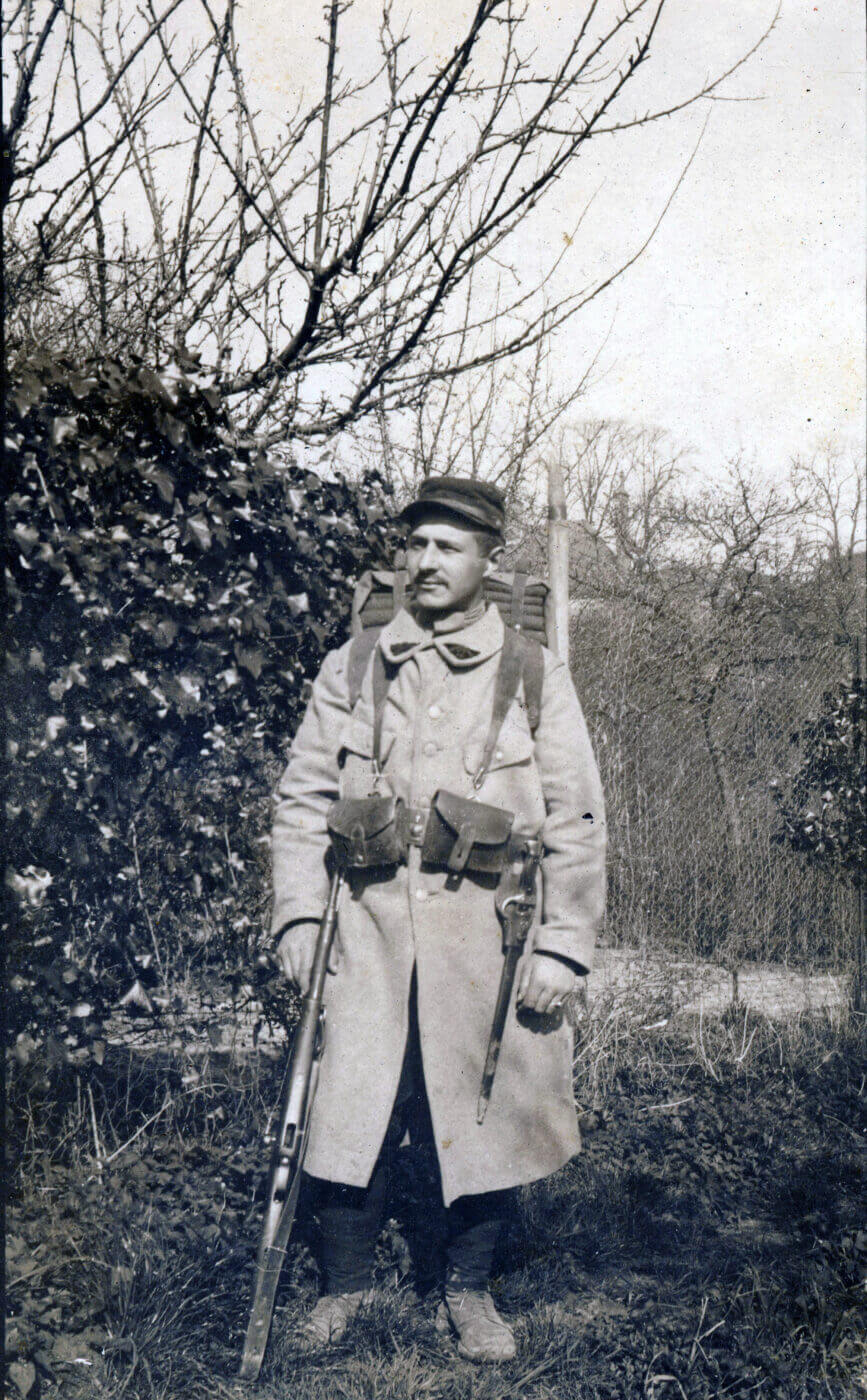
The Berthier Model 1902 rifle proved preferable to the larger and heavier Lebel rifles for Asian troopers who typically were of smaller statute than the soldiers from Metropolitan France. Another rifle version, the Model 1907, was introduced in 1908 for use by Senegalese and other African colonial troops. Today the M1902 and M1907 are among the rarest of the Berthier rifle variations.
It should also be noted that cavalry and Cuirassier carbines never had provisions to mount a bayonet, while the Gendarmerie and artillery carbines, as well as the M02 and M07 rifle models, did utilize a cruciform bayonet.
One interesting point about the Berthier’s design was that it lacked a mechanical safety, which was also true of the Lebel. This wasn’t actually an oversight, however. French training protocols in the decades leading up to the First World War called for soldiers to carry their rifles with loaded magazines but without a round in the chamber until they were ordered to load by their NCO or officer.
As the Berthier was employed by many troops who had limited technological and often even military experience, and since the climate conditions in North Africa and Indochina were extremely hard on weapons, carrying the rifle with an empty chamber was considered a better option over a mechanical safety. No round in the chamber meant that it was impossible for one to go off, unlike a rifle where the safety was not engaged or malfunctioned due to wear or dirt.
In the Trenches
Until the outbreak of the First World War, the Berthier was limited to the cavalry, artillery, Gendarmerie and colonial forces, while the French infantry continued to use the Lebel. However, the demand for small arms increased after the outbreak of war, and an infantry version of the Berthier was put in mass production as the M107/15 version. It is notable in that it was manufactured in France and later in the United States by Remington for use with the French Army.
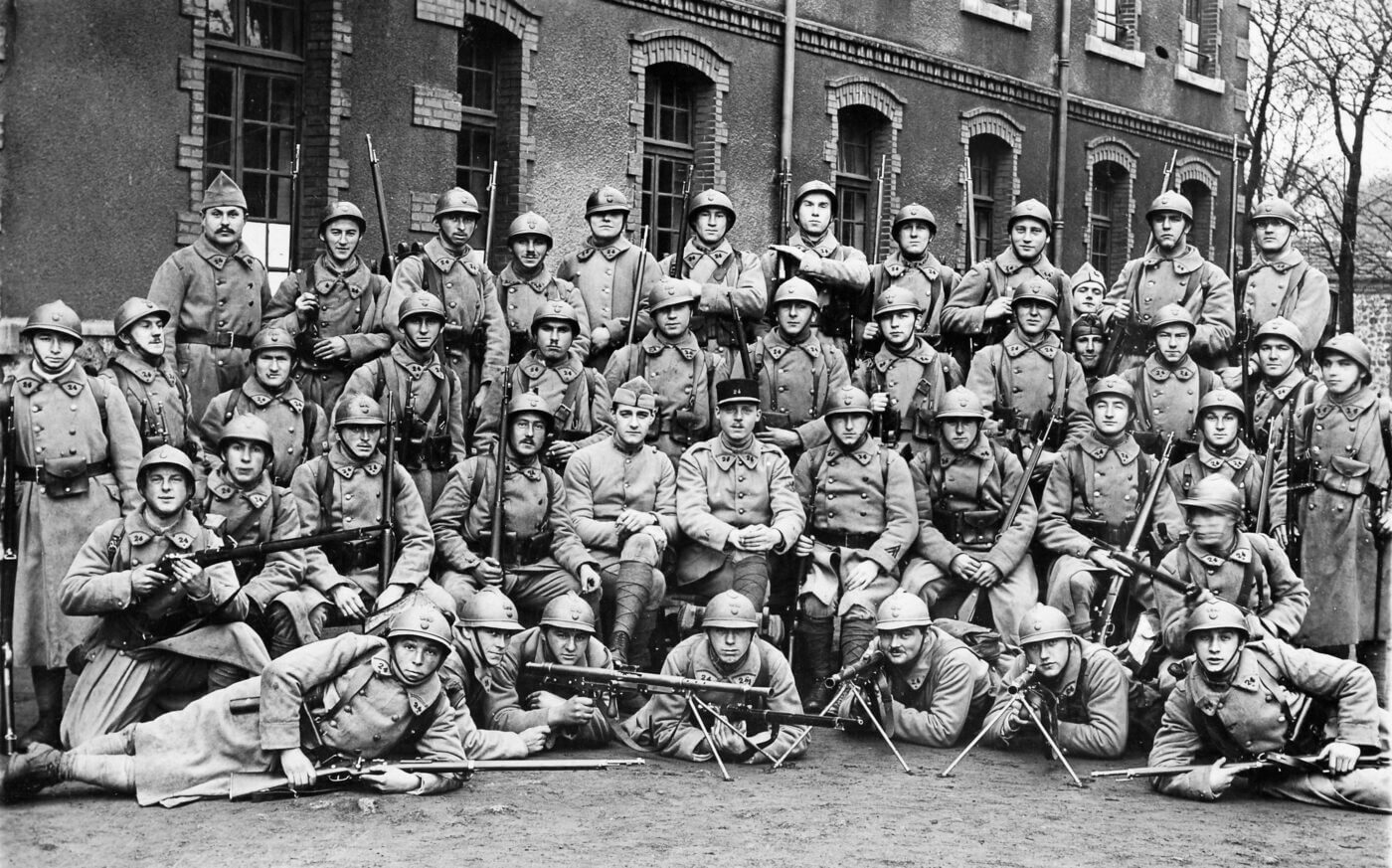
This version maintained the three-round magazine, while the sights, barrel band and stacking hook were all simplified to increase the rate of production of the Berthier. One notable difference with this later version is that unlike the original 1907 rifle version, which incorporated a cruciform bayonet, the M07/15 rifle Berthier was designed so that it could be fitted with the Lebel bayonet. In addition, its turned-down bolt handle was also changed to straight bolt similar to the Lebel’s.
However, front line experience with all the Berthier models showed that the three-round magazine, while easy and quick to load, presented a problem as soldiers facing attacks by the enemy quickly ran through the ammunition in the rifles. By contrast, the German Army was largely equipped with five-shot Mauser rifles.
As a result, in 1916 the Berthier was once again modified, and this time all further rifle and carbine models featured a five-round en-block clips that were fed into enlarged magazines that included steel covers protruding from the bottom of the stock. This cover, which included a spring-loaded trapdoor that was designed to keep out dirt and debris, replaced the discharge opening for the three-round en-block clips.
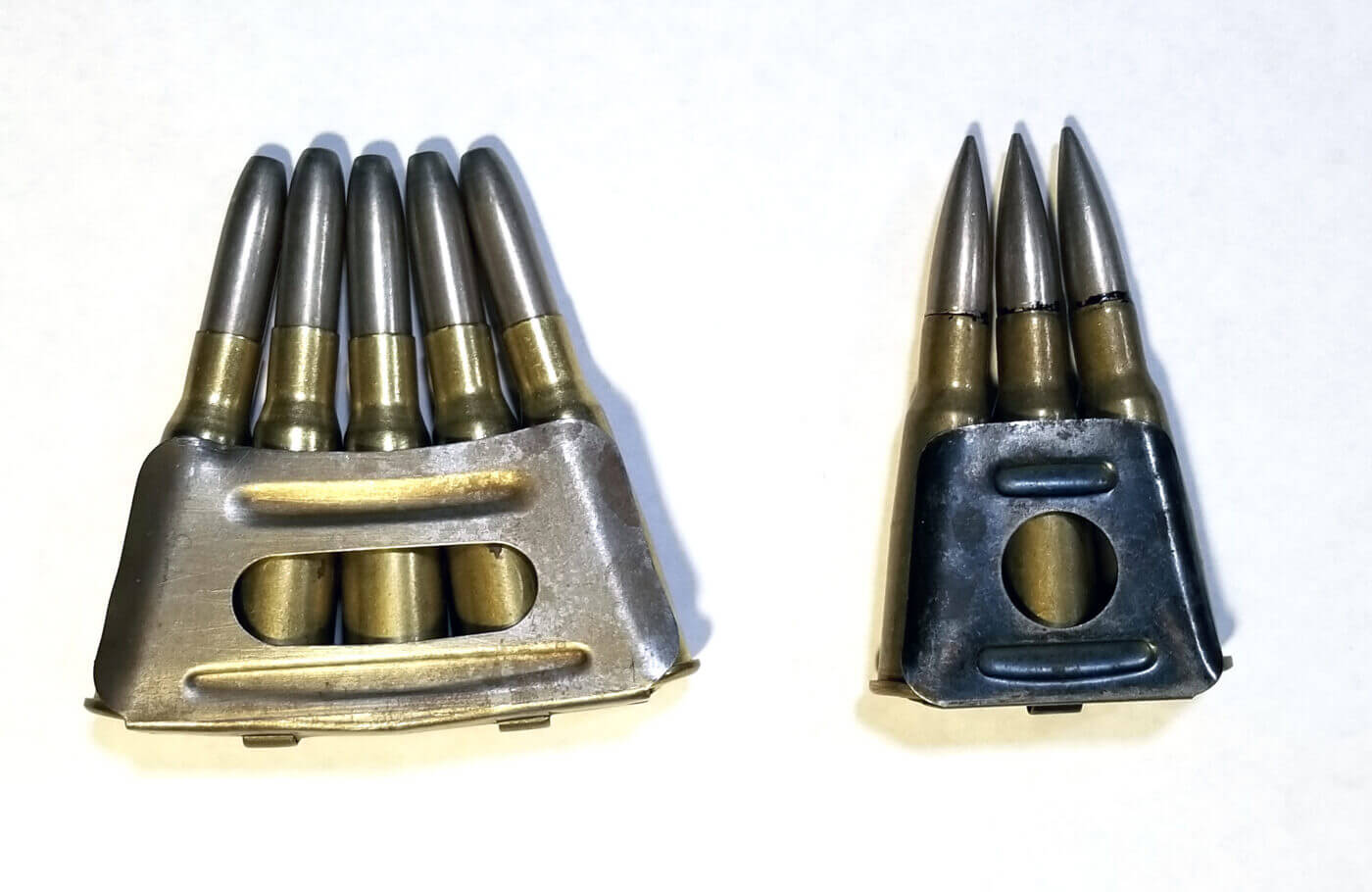
While the external magazine cover was exactly what the cavalry units and military planners sought to avoid, the truth was by 1916 the war of mass movement and cavalry was largely a thing of the past – certainly on the Western Front. Greater magazine capacity was a far more pressing issue for soldiers.
Existing Berthier carbines and rifles were retrofitted with this magazine, while all newly produced weapons received the extended magazine. In addition, while all models prior to the 1916 versions featured an upper portion of the barrel that was unprotected, the later models had a short wooden handguard immediately in front of the receiver. As with the previous models there was no manual safety, and moreover the turned-down bolt was utilized with all subsequent carbine models as well as the M07/15 rifle version.
During the war, many Berthier rifles were fitted with sights that were designed for close range or night combat, and this included using radium paint to improve visibility in poor light conditions and even in darkness.
Post-World War
One irony of the improved Berthiers is that by the time production ramped up to meet the demand the war ended, and thousands of rifles were never issued in the trenches. However, the French military did issue these weapons — both the pre-WWI three-round en-block versions and the wartime designed five-round en-block versions — to its colonial forces.

The Berthier remained in use with colonial and French Foreign Legion units even after the French military adopted the MAS-36 bolt-action rifle. While outdated considering the change in French military doctrine, the Berthier was still used as supplies of the newer rifles were still limited, and by the outbreak of the Second World War in 1939 the Bertheir saw widespread use. It may have been largely outdated, but it was still a reliable weapon and was considered accurate enough that the rifle was fitted with telescopic sights and carried by marksmen in some infantry units.
The five-shot rifle version was used by the French Army during the actions in Norway in 1940 and later in the Battle for France. After the fall of France in June 1940, the rifle remained in service with both Vichy and Free French units, and captured supplies of Berthier rifles were issued as the Gewehr 241(f) to German occupation forces in France, and later on the Atlantic Wall. These rifles were also used by Axis police forces engaged in anti-partisan activities in Eastern Europe and also in rear action areas on the Russian Front.
Even after World War II, the Berthier still found a place in service for the French military with some colonial units, French Foreign Legion and border guard units. Some French law enforcement units still had the Berthier in their arsenals as late as the 1980s.
One unique variation was the Turkish Forestry Carbine, which were full-length rifles cut down to utilize a Mannlicher-style stock. The rifles were sold to Turkey as surplus after World War II and were used by the Turkish military to protect the Caucasian walnut forests from illegal logging.
So, despite its faltering beginnings, the Berthier did prove to be far more successful than its designers could have envisioned.
Editor’s Note: Please be sure to check out The Armory Life Forum, where you can comment about our daily articles, as well as just talk guns and gear. Click the “Go To Forum Thread” link below to jump in!
Join the Discussion
Continue Reading
Did you enjoy this article?

 38
38






